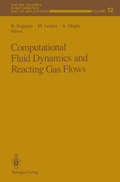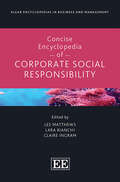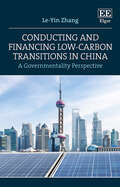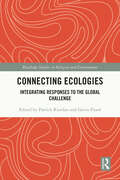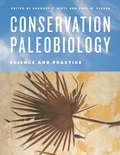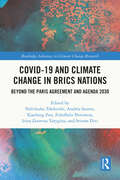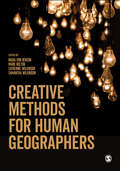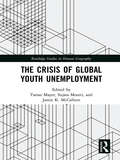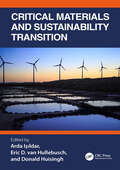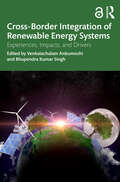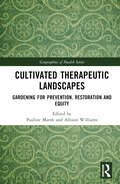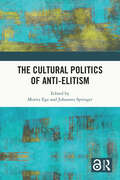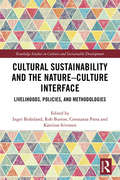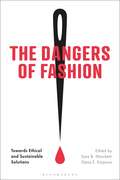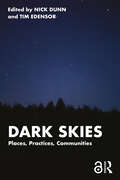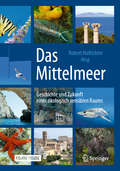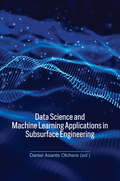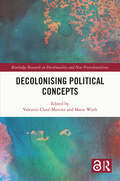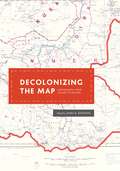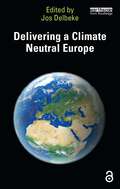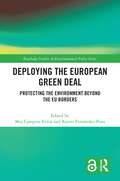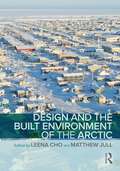- Table View
- List View
Computational Fluid Dynamics and Reacting Gas Flows (The IMA Volumes in Mathematics and its Applications #12)
This IMA Volume in Mathematics and its Applications COMPUTATIONAL FLUID DYNAMICS AND REACTING GAS FLOWS is in part the proceedings of a workshop which was an integral part of the 1986-87 IMA program on SCIENTIFIC COMPUTATION. We are grateful to the Scientific Committee: Bjorn Engquist (Chairman), Roland Glowinski, Mitchell Luskin and Andrew Majda for planning and implementing an exciting and stimulating year-long program. We especially thank the Workshop Organizers, Bjorn Engquist, Mitchell Luskin and Andrew Majda, for organizing a workshop which brought together many of the leading researchers in the area of computational fluid dynamics. George R. Sell Hans Weinberger PREFACE Computational fluid dynamics has always been of central importance in scientific computing. It is also a field which clearly displays the essential theme of interaction between mathematics, physics, and computer science. Therefore, it was natural for the first workshop of the 1986- 87 program on scientific computing at the Institute for Mathematics and Its Applications to concentrate on computational fluid dynamics. In the workshop, more traditional fields were mixed with fields of emerging importance such as reacting gas flows and non-Newtonian flows. The workshop was marked by a high level of interaction and discussion among researchers representing varied "schools of thought" and countries.
Concise Encyclopedia of Corporate Social Responsibility (Elgar Encyclopedias in Business and Management series)
This Concise Encyclopedia is an interdisciplinary overview of the field of Corporate Social Responsibility (CSR). It not only incorporates well-established concepts proffered by highly influential voices, but also captures the perspectives of tomorrow.The entries present some of the main topics gravitating around CSR and its theoretical evolution, while recognising how the framework has spread out into different academic fields. This Concise Encyclopedia helps to update CSR scholarship in line with developments within the broader discourse on the responsibilities of business, with new reflections on well-established concepts.Presenting a state-of-the-art discussion on the evolution of and future for CSR, this Concise Encyclopedia will serve as a significant reference point for both scholars and students of Business Ethics, Business and Human Rights and Corporate Sustainability. The depth of discussion throughout the Concise Encyclopedia will be useful for academics, practitioners, and policymakers alike.Key Features:46 accessible and fully-referenced entriesContributions from leading scholars and academics in the fieldWritten in a critical and reflective style, with entries grounded in ongoing debates on CSRRecognition of Business and Human Rights (BHR) as an emergent theme within CSR, with entries on modern slavery and workers’ rights
Conducting and Financing Low-carbon Transitions in China: A Governmentality Perspective
Utilizing a governmentality lens, this timely book offers an explanation for China’s decarbonization performance in the early 21st century. Le-Yin Zhang investigates one of the most ambitious governing projects in history, analyzing the political rationalities of Chinese leaders for decarbonization and the governing techniques and technologies at multiple levels of governance. Demonstrating the potential of combining the use of juridical, administrative and governmental powers, Zhang holistically considers the success of the state in instigating low-carbon transitions in China and mitigating climate disaster. The book provides an in-depth exploration of the art of greening the Chinese financial system and how this links to a wider formulation of carbon governmentality, highlighting the rise of the carbon governmental state through a range of governmental technologies. Engaging with a wide range of primary data from both national and local levels, the author uncovers profound lessons in low-carbon transitions for other states in the making of a carbon neutral world. This cutting-edge book offers key insights for scholars and researchers of environmental governance and its importance in mitigating climate change, particularly those with a key focus on Chinese climate policy. It will also benefit government officials, researchers and consultants investigating potential avenues for low-carbon transition and climate action.
Connecting Ecologies: Integrating Responses to the Global Challenge (Routledge Studies in Religion and Environment)
Connecting Ecologies focuses on the environmental aspects of Pope Francis’ encyclical Laudato Si’ and the challenge to care for our common home. It considers how best to devise and implement the new societal models needed to tackle the ecological problems facing the world today. The book addresses the need for and complexity of an integral ecology, one that looks not only at physical and biological processes but also allows for the contributions of theology, philosophy, spirituality, and psychology, including the implications for the human and social sciences. The contributions document four categories of resonances, resources, requirements, and responses evoked by a reading of Laudato Si’ and include consideration of other faith traditions. They reflect on how care for our common home motivates people in different places, cultures, and professions to cooperate for myriad goods in common. The volume is particularly relevant for scholars working in religious studies and theology with an interest in ecology, the environment, and the Anthropocene.
Conservation Paleobiology: Science and Practice
In conservation, perhaps no better example exists of the past informing the present than the return of the California condor to the Vermilion Cliffs of Arizona. Extinct in the region for nearly one hundred years, condors were successfully reintroduced starting in the 1990s in an effort informed by the fossil record—condor skeletal remains had been found in the area’s late-Pleistocene cave deposits. The potential benefits of applying such data to conservation initiatives are unquestionably great, yet integrating the relevant disciplines has proven challenging. Conservation Paleobiology gathers a remarkable array of scientists—from Jeremy B. C. Jackson to Geerat J. Vermeij—to provide an authoritative overview of how paleobiology can inform both the management of threatened species and larger conservation decisions. Studying endangered species is difficult. They are by definition rare, some exist only in captivity, and for those still in their native habitats any experimentation can potentially have a negative effect on survival. Moreover, a lack of long-term data makes it challenging to anticipate biotic responses to environmental conditions that are outside of our immediate experience. But in the fossil and prefossil records—from natural accumulations such as reefs, shell beds, and caves to human-made deposits like kitchen middens and archaeological sites—enlightening parallels to the Anthropocene can be found that might serve as a primer for present-day predicaments. Offering both deep-time and near-time perspectives and exploring a range of ecological and evolutionary dynamics and taxa from terrestrial as well as aquatic habitats, Conservation Paleobiology is a sterling demonstration of how the past can be used to manage for the future, giving new hope for the creation and implementation of successful conservation programs.
Contextual Heterogeneity in Entrepreneurship Research: Frontiers in European Entrepreneurship Research (Frontiers in European Entrepreneurship series)
This insightful book explores the importance and influence of contextual heterogeneity in the field of entrepreneurship research, illuminating the circumstances, conditions or environments that may enable or constrain entrepreneurship. Expert contributors present the results of empirical studies in a wide variety of contexts, describing their depth and meaning both for entrepreneurship research and practice. Chapters illustrate a range of topics and research methods, including business model innovation in start-up companies, the challenges and opportunities for women entrepreneurs in STEM, and the use of technology signalling in explaining the performance of immigrant entrepreneurship in market economies. Presenting new scientific evidence in the field, together with research-informed policy and practical implications, the book demonstrates that a multitude of research approaches must be used to reflect the multi-dimensional nature of context in entrepreneurship. Warning against simplistic interpretations and superficial conclusions of research, this book will prove to be an invaluable resource for scholars and students of entrepreneurship. Its use of empirical studies will also be beneficial for practitioners in this field.
Convergence and Developmental Aspects of Credit Allocations in BRICS Nations: Theoretical and Empirical Inquiries
This book explores the levels of cooperation and the phenomenon of convergence among BRICS nations. It provides an in-depth look into the financial and banking systems among these rapidly developing economies and the steps they have taken to foster development and counter inequalities.Of the many factors in determining the income and wealth of a country as well as a group of countries, commercial bank credit, a well-known financial indicator, has been an important one. This book analyses the governance and structure of the New Development Bank and its effects on group members for peer growth and to defend against any external economic and political shocks. It looks at how much of an influence the commercial bank credit, or simply the credit, has upon the income levels of the BRICS member countries, how equitable they are, whether they are converging in credits and incomes, and other such issues. It also focuses on India’s credit aspects of inclusiveness and convergence.With a strong empirical model estimation, this book will be of interest to students and researchers of economics, finance, management, political studies, international relations, and international trade.
COVID-19 and Climate Change in BRICS Nations: Beyond the Paris Agreement and Agenda 2030 (Routledge Advances in Climate Change Research)
This book provides a quantitative and qualitative overview of the overall impact that the COVID-19 pandemic had on Brazil, Russia, India, China, and South Africa’s (BRICS countries) capacity to re-shape global climate governance and explore areas for mutual cooperation. BRICS countries account for nearly 40% of the total world population and are thus intrinsic to the global efforts and results for Agenda 2030, the Sustainable Development Goals, the Paris Agreement and beyond. The outbreak of the COVID-19 pandemic does not at first appear to be directly related to BRICS’ policies to address climate change, but it has influenced the pace and nature of climate action due to the loss of human and financial capital. This book examines this correlation and raises awareness of the COVID-19 pandemic’s impacts and potential solutions on BRICS’ climate strategies. Drawing on case studies from each country, the authors use examples from urban governance, energy transitions strategy, foreign investment and more to illustrate how COVID-19 has negatively or positively impacted climate data and draw wider conclusions about the long-term climate policies that may be implemented. This volume will be of great interest to students and scholars of climate change, environmental politics and governance and global development studies.
Creative Methods for Human Geographers
Introducing a broad range of innovative and creative qualitative methods, this accessible book shows you how to use them in research project while providing straightforward advice on how to approach every step of the process, from planning and organisation to writing up and disseminating research. It offers: Demonstration of creative methods using both primary or secondary data. Practical guidance on overcoming common hurdles, such as getting ethical clearance and conducting a risk assessment. Encouragement to reflect critically on the processes involved in research. The authors provide a complete toolkit for conducting research in geography, while ensuring the most cutting-edge methods are unintimidating to the reader.
The Crisis of Global Youth Unemployment (Routledge Studies in Human Geography)
Since the economic and financial crisis of 2008, the proportion of unemployed young people has exceeded any other group of unemployed adults. This phenomenon marks the emergence of a laborscape. This concept recognizes that, although youth unemployment is not consistent across the world, it is a coherent problem in the global political economy. This book examines this crisis of youth unemployment, drawing on international case studies. It is organized around four key dimensions of the crisis: precarity, flexibility, migration, and policy responses. With contributions from leading experts in the field, the chapters offer a dynamic portrait of unemployment and how this is being challenged through new modes of resistance. This book provides cross-national comparisons, both ethnographic and quantitative, to explore the contours of this laborscape on the global, national, and local scales. Throughout these varied case studies is a common narrative from young workers, families, students, volunteers, and activists facing a new and growing problem. This book will be an imperative resource for students and researchers looking at the sociology of globalization, global political economy, labor markets, and economic geography.
Critical Materials and Sustainability Transition
Critical minerals play a vital role in the ongoing energy transition, which aims to shift global energy systems towards more sustainable and low-carbon alternatives. These minerals, also known as critical minerals, are essential components in various clean energy technologies such as wind turbines, solar panels, electric vehicles, and energy storage systems. They possess unique properties that enable efficient energy generation, storage, and transmission. For instance, neodymium, a rare earth element, is crucial for the production of high-performance magnets used in wind turbines and electric motors. Lithium, another critical mineral, is a key component in rechargeable batteries powering electric vehicles and energy storage solutions. As the demand for clean energy technologies continues to rise, securing a sustainable and reliable supply of critical minerals becomes increasingly important to support the global energy transition and reduce dependence on fossil fuels. In this book, we investigate various aspects of critical mineral governance in the context of sustainability transition. We give perspectives around the critical metal requirements of sustainability transition in a forward-looking manner. We discuss the answers to the following questions: What role do the critical raw materials play in the transition to a sustainable economy and energy systems transformation? What are the bottlenecks in achieving a sustainable critical material supply? How do the critical minerals enable renewable energy transition and sustainable development? What is their role in the sustainability transition? How is mineral criticality assessed? And how critical are minerals? What are some regional differences in terms of critical mineral availability, processing capacity, and the supply chain? What strategy should be followed in deciding between primary raw materials and secondary raw materials in supplying critical raw materials for the transition to a sustainable economy? What is the (known) critical material budget, and how does it fit with the climate pledges? The authors of the chapters of this book take a multi-perspective approach and provide insights from industrial ecology, environmental engineering, and sustainable management of natural resources. The information provided will help readers to understand critical metal requirements of present and future key technologies and will help societies to develop and implement sustainable supply strategies.
Cross-Border Integration of Renewable Energy Systems: Experiences, Impacts, and Drivers
Cross-border energy trade and integration of renewable energy have become significant for countries and regions to meet demands, minimize costs, and foster socio-economic and climate stability in the dynamic and unstable energy market. This book explores different models of global energy trade between regions and their benefits and challenges with a special focus on India’s Northeast region. Countries in South and Southeast Asia are endowed with abundant renewable energy resources. This book examines the energy mix of the countries such as India, Myanmar, Thailand, Bangladesh, and Bhutan among others and their efforts to achieve more integrated markets and renewable energy integration in the region. It highlights the potential of Northeast India given its rich natural resources and strategic location to harness the potential cross-border energy trade with ASEAN countries. The volume provides analytical perspectives on drivers, constraints, opportunities and barriers, as well as measures that countries could take to address institutional, financial, policy, and governance issues to minimize the total costs of energy security and maximize the social-economic benefits for people in these regions. It identifies the necessary conditions – grid flexibility, policy, market, and regulatory solutions for clean energy trade – and contributes to growth of low-carbon development as well as policy making by focusing on renewable energy integration across borders. This volume will be of interest to students and researchers of energy and climate studies, environmental politics, trade, and economics and international relations. This book is freely available as a downloadable Open Access PDF at www.taylorfrancis.com under a Creative Commons (CC-BY-NC-ND) 4.0 license.
Cultivated Therapeutic Landscapes: Gardening for Prevention, Restoration, and Equity (Geographies of Health Series)
Cultivated Therapeutic Landscapes provides an in-depth and critical explora-tion of the impact of gardens and gardening on health and wellbeing. In this book we explore the ways in which gardens and gardening prevent illness and restore wellbeing, and how they improve social and health equity via tradi-tional and innovative mechanisms and across a range of sites. Therapeutic landscapes are relational, reciprocal, and evolving. In this book, leading scholars from across the globe demonstrate how therapeutic landscapes research and practice is expanded through and around the pro-cesses of cultivation. Deliberately interdisciplinary, the book explores how tending and caring for green spaces, collectively and individually, works to pre-vent and restore health and wellbeing, as well as impact upstream factors de-termining social justice and equity. A unique combination of academics, clinicians, and practitioners deliver theoretical and practical insights into wide-ranging health-enabling factors, based on new evidence and autoethno-graphic experiences in home gardens, school, and community gardens, clinical settings, public green spaces, and sites of conservation and wildness. This book pushes concepts of cultivation and horticulture into underexplored spatial, on-tological, and wellbeing territories. Despite long-term practical interest, thera-peutic horticulture is only now establishing a strong theoretical and research foundation. This book provides much-needed critical insights into the impact on the key drivers of health, wellbeing, and social equity, with a focus on practical skills for utilising horticulture or designing for particular health needs. It will be of interest to students, scholars, and practitioners in the areas of health geogra-phy; cultural geography; cultural studies; therapeutic horticulture; environ-mental studies; community development and planning; landscape architecture; social work; health studies; and health policy.
The Cultural Politics of Anti-Elitism
This book examines the highly ambivalent implications and effects of anti-elitism. It draws on this theme as a cross-cutting entry point to provide transdisciplinary analysis of current conjunctures and their contradictions, drawing on examples from popular culture and media, politics, fashion, labour and spatial arrangements. Using the toolboxes of media and discourse analysis, hegemony theory, ethnography, critical social psychology and cultural studies more broadly, the book surveys and theorizes the forms, the implications and the ambiguities and limits of anti-elitist formations in different parts of the world. Anti-elitist sentiments colour the contemporary political conjuncture as much as they shape pop cultural and media trends. Populists, right-wing authoritarian ones and others, direct their anger at cultural, political and, sometimes, economic elites while supporting other elites and creating new ones. At the same time, "elitist" knowledge and expertise, decision-making power and taste regimes are being questioned in societal transformations that are discussed much more positively under headlines such as participation or democratization. The book brings together a group of international, interdisciplinary case studies in order to better understand the ways in which the battle cry "against the elites" shapes current conjunctures and possible future politics, focusing on themes such as nationalist political discourse in India, Austria, the UK and Hungary, labour struggles and anti-oligarchy rhetoric in Russia, tax-avoiding elites and fiscal imaginaries, working-class agency, Melania Trump as a celebrity narrative in Slovenia, aesthetic codes of the Alt-Right, football hooliganism in Germany, "hipster hate" in German political discourse or the politics of expertise and anti-elite iconography in high fashion internationally. The book is intended for undergraduates, postgraduates and postdoctoral researchers.
Cultural Sustainability and the Nature-Culture Interface: Livelihoods, Policies, and Methodologies (Routledge Studies in Culture and Sustainable Development)
As contemporary socio-ecological challenges such as climate change and biodiversity preservation have become more important, the three pillars concept has increasingly been used in planning and policy circles as a framework for analysis and action. However, the issue of how culture influences sustainability is still an underexplored theme. Understanding how culture can act as a resource to promote sustainability, rather than a barrier, is the key to the development of cultural sustainability. This book explores the interfaces between nature and culture through the perspective of cultural sustainability. A cultural perspective on environmental sustainability enables a renewal of sustainability discourse and practices across rural and urban landscapes, natural and cultural systems, stressing heterogeneity and complexity. The book focuses on the nature-culture interface conceptualised as a place where experiences, practices, policies, ideas and knowledge meet, are negotiated, discussed and resolved. Rather than looking for lost unities, or an imaginary view of harmonious relationships between humans and nature based in the past, it explores cases of interfaces that are context-sensitive and which consciously convey the problems of scale and time. While calling attention to a cultural or ‘culturalised’ view of the sustainability debate, this book questions the radical nature-culture dualism dominating positive modern thinking as well as its underlying view of nature as pre-given and independent from human life.
The Dangers of Fashion: Towards Ethical and Sustainable Solutions
From sweatshops to fur farming, from polluting chemicals to painful garments, the fashion industry is associated with activities which have had devastating effects on workers, consumers, and the natural world. This ground-breaking volume provides a framework for examining the ethical, social, and environmental dangers that arise as fashion products are designed, manufactured, distributed, and sold within retail outlets, before being consumed and disposed of. Encompassing the cultural, psychological, and physiological aspects of fashion, it offers a comprehensive exploration of the hazards of a global industry. Drawing together an international team of leading textile and apparel experts, The Dangers of Fashion presents original perspectives on a wide range of topics from piracy and counterfeiting to human trafficking; from the effects of globalization on local industry to the peer pressure that governs contemporary ideals of beauty. Rooted in research into industry and consumer practices, it discusses innovative solutions-both potential and existing-to fashion's dangers and moral dilemmas from the viewpoint of individuals, companies, societies, and the global community.
Dark Skies: Places, Practices, Communities
Dark Skies addresses a significant gap in knowledge in relation to perspectives from the arts, humanities, and social sciences. In providing a new multi- and interdisciplinary field of inquiry, this book brings together engagements with dark skies from a variety of disciplinary backgrounds, empirical studies, and theoretical orientations. Throughout history, the relationship with dark skies has generated a sense of wonder and awe, as well as providing the basis for important cultural meanings and spiritual beliefs. However, the connection to darks skies is now under threat due to the widespread growth of light pollution and the harmful impacts that this has upon humans, non-humans, and the planet we share. This book, therefore, examines the rich potential of dark skies and their relationships with place, communities, and practices to provide new insights and understandings on their importance for our world in an era of climate emergency and environmental degradation. This book is intended for a wide audience. It will be of interest to scholars, students, and professionals in geography, design, astronomy, anthropology, ecology, history, and public policy, as well as anyone who has an interest in how we can protect the night sky for the benefit of us all and the future generations to follow.
Das Mittelmeer: Geschichte und Zukunft eines ökologisch sensiblen Raums
Dieses nahezu vollständig überarbeitete und um zwei gänzlich neue Kapitel erweiterte Werk ist weit mehr als nur eine 2. Auflage. Denn in den letzten 20 Jahren haben Herausgeber und Mitautoren viel Neues und Verblüffendes über das Mittelmeer erfahren. Eine neue Wissenschaft hat sich formiert, die multidisziplinäre Mediterranistik, die dank Historikern neue Einsichten zum Verständnis dieses Raums ermöglicht. Doch auch die Umweltforschung machte große Fortschritte und fördert Beunruhigendes an den Tag: Die negativen Veränderungen im Mittelmeer und im mediterranen Raum laufen heute in einer Geschwindigkeit ab, die es in der Erdgeschichte bisher wahrscheinlich noch nie gegeben hat. Dieses erweiterte Wissen hat Einzug in das Buch gefunden.Der Leser erhält einen weit gefassten Überblick über die Erdgeschichte der mediterranen Region, aber auch über die Rolle unserer Vorfahren darin, den Hominini. Das aktuelle Wissen zum mediterranen Raum ist hier zusammengefasst – von der Biodiversität bis zur wirtschaftlichen Nutzung der marinen Ressourcen, von den klimatischen Verhältnissen, den Wasserströmungen und Winden bis zu den komplexen Nahrungsnetzen und ökologischen Abhängigkeiten innerhalb der Pflanzen- und Tierwelt des Mittelmeeres. Die enorme Bandbreite der Themen soll Liebhabern der Mittelmeerregion ebenso entgegenkommen wie Meeresschützern, Tauchern, Forschern, Seglern und Reisenden – jedem, der über das Mittelmeer etwas wissen will. Hunderte von eigens für dieses Werk entwickelten Grafiken veranschaulichen die in zwölf Kapiteln besprochenen Phänomene, Prozesse und Konzepte. Zahlreiche Tabellen fassen die Ergebnisse umfangreicher Recherchen zusammen. Farblich hervorgehobene Exkurse beleuchten spannende Einzelaspekte der Natur- und Kulturgeschichte des Mittelmeeres. Eindrucksvolle Farbfotos der mediterranen Lebensräume und ihrer Lebewesen begleiten die informativen Texte. Die Fülle der in diesem Werk verarbeiteten Informationen, die Klarheit der Darstellung und die ansprechende Gestaltung machen Das Mittelmeer zu einem unentbehrlichen Nachschlagewerk und außergewöhnlichen Lesevergnügen zugleich. Der Rat der Autoren: „Tun Sie für die Umwelt mehr als Sie müssen!“
Data-Driven Farming: Harnessing the Power of AI and Machine Learning in Agriculture
In the dynamic realm of agriculture, artificial intelligence (AI) and machine learning (ML) emerge as catalysts for unprecedented transformation and growth. The emergence of big data, Internet of Things (IoT) sensors, and advanced analytics has opened up new possibilities for farmers to collect and analyze data in real-time, make informed decisions, and increase efficiency. AI and ML are key enablers of data-driven farming, allowing farmers to use algorithms and predictive models to gain insights into crop health, soil quality, weather patterns, and more. Agriculture is an industry that is deeply rooted in tradition, but the landscape is rapidly changing with the emergence of new technologies.Data-Driven Farming: Harnessing the Power of AI and Machine Learning in Agriculture is a comprehensive guide that explores how the latest advances in technology can help farmers make better decisions and maximize yields. It offers a detailed overview of the intersection of data, AI, and ML in agriculture and offers real-world examples and case studies that demonstrate how these tools can help farmers improve efficiency, reduce waste, and increase profitability. Exploring how AI and ML can be used to achieve sustainable and profitable farming practices, the book provides an introduction to the basics of data-driven farming, including an overview of the key concepts, tools, and technologies. It also discusses the challenges and opportunities facing farmers in today’s data-driven landscape. Covering such topics as crop monitoring, weather forecasting, pest management, and soil health management, the book focuses on analyzing data, predicting outcomes, and optimizing decision-making in a range of agricultural contexts.
Data Science and Machine Learning Applications in Subsurface Engineering
This book covers unsupervised learning, supervised learning, clustering approaches, feature engineering, explainable AI and multioutput regression models for subsurface engineering problems. Processing voluminous and complex data sets are the primary focus of the field of machine learning (ML). ML aims to develop data-driven methods and computational algorithms that can learn to identify complex and non-linear patterns to understand and predict the relationships between variables by analysing extensive data. Although ML models provide the final output for predictions, several steps need to be performed to achieve accurate predictions. These steps, data pre-processing, feature selection, feature engineering and outlier removal, are all contained in this book. New models are also developed using existing ML architecture and learning theories to improve the performance of traditional ML models and handle small and big data without manual adjustments. This research-oriented book will help subsurface engineers, geophysicists, and geoscientists become familiar with data science and ML advances relevant to subsurface engineering. Additionally, it demonstrates the use of data-driven approaches for salt identification, seismic interpretation, estimating enhanced oil recovery factor, predicting pore fluid types, petrophysical property prediction, estimating pressure drop in pipelines, bubble point pressure prediction, enhancing drilling mud loss, smart well completion and synthetic well log predictions.
Decolonising Political Concepts (Routledge Research on Decoloniality and New Postcolonialisms)
This book presents a transdisciplinary and transnational challenge to the enduring coloniality of political concepts, discussing the need to decolonise both their theoretical constructions as well as their substantive translations into practices. Despite the acclaimed 20th century decolonisation waves, coloniality still remains in subtle and obvious practices, in visible and invisible mechanisms of power, in the privileging of certain knowledges and the dismissing of others. Decolonising Political Concepts critically addresses the role political concepts play in the continuing legacies of colonialism and ongoing coloniality. This book, building on postcolonial and decolonial thinkers and ideas, demonstrates how concepts may be used as oppressing political and epistemological tools. By presenting efforts to decolonise political concepts, the book signals the potential for genuinely postcolonial academic and political contexts. Bringing together scholars from different disciplines and engaging with a wide array of geographical contexts, the chapters examine concepts such as agency, violence, freedom, or sovereignty. This book enables readers to critically engage with concepts used in political discourse and allows them to reflect on their impact and alternatives. It will appeal to graduate students and scholars from international relations, social sciences, or philosophy, as well as to socio-political actors engaged in decolonisation agendas.
Decolonizing the Map: Cartography from Colony to Nation (The Kenneth Nebenzahl Jr. Lectures in the History of Cartography)
Almost universally, newly independent states seek to affirm their independence and identity by making the production of new maps and atlases a top priority. For formerly colonized peoples, however, this process neither begins nor ends with independence, and it is rarely straightforward. Mapping their own land is fraught with a fresh set of issues: how to define and administer their territories, develop their national identity, establish their role in the community of nations, and more. The contributors to Decolonizing the Map explore this complicated relationship between mapping and decolonization while engaging with recent theoretical debates about the nature of decolonization itself. These essays, originally delivered as the 2010 Kenneth Nebenzahl, Jr., Lectures in the History of Cartography at the Newberry Library, encompass more than two centuries and three continents—Latin America, Africa, and Asia. Ranging from the late eighteenth century through the mid-twentieth, contributors study topics from mapping and national identity in late colonial Mexico to the enduring complications created by the partition of British India and the racialized organization of space in apartheid and post-apartheid South Africa. A vital contribution to studies of both colonization and cartography, Decolonizing the Map is the first book to systematically and comprehensively examine the engagement of mapping in the long—and clearly unfinished—parallel processes of decolonization and nation building in the modern world.
Delivering a Climate Neutral Europe
Delivering a Climate Neutral Europe summarises the achievements of 25 years of EU Climate Policy, with the emphasis on what has been achieved under the Green Deal. It also highlights climate issues on the table of policy makers in the next European policy cycle 2024–2029.Curated by Jos Delbeke, one of the foremost experts in this field, the chapters are all written by responsible officials of the EU Commission services, who were deeply involved in the negotiations related to the legislation they prepared. They explain how ambitious targets were prepared for 2030 and 2050 in view of implementing the commitments taken in 2015 under the Paris Agreement and present the overall architecture of the policy to counter the idea that an avalanche of legislative action is being developed without much structure. In particular, this book examines the carbon pricing tool that Europe implemented under the EU Emissions Trading System (EU ETS), the differentiated targets Member States have to deliver and climate-relevant EU legislation in the fields of energy, transport, industry, finance and agriculture and forestry. The authors also discuss the upcoming headwinds in the form of a growing scepticism in public opinion, and the impact of the wars in the close neighbourhood of the European continent.Written as a follow-up to previous publications EU Climate Policy Explained and Towards a Climate-Neutral Europe, this new volume will be a vital resource for students, scholars and policy makers alike who are researching and working in the areas of climate change, environmental governance and EU policy more broadly.
Deploying the European Green Deal: Protecting the Environment Beyond the EU Borders (Routledge Studies in Environmental Policy)
Drawing on a range of expert contributions, this book explores how the European Green Deal is being deployed in practice and observes how the EU tries to promote the protection of the environment in third countries.This book begins by assessing the state of the art in terms of the key conceptual issues and analyses sectoral initiatives that are particularly relevant for the deployment of the European Green Deal external dimensions. These include the Carbon Border Adjustment Mechanism, the EU’s regulatory action in the control of maritime emissions, the 2030 Biodiversity Strategy, the Deforestation Initiative, the Zero Pollution Initiative, the From Farm to Fork Initiative, and the Climate Neutrality and Clean Energy Initiative in the context of the Energy Charter Treaty. Next, the authors deal with horizontal aspects of the European Green Deal that also have external dimensions, such as the Green Deal Diplomacy, the Green Public Procurement, funding measures, initiatives related to corporate sustainability and due diligence, and the implementation and enforcement of EU environmental law. This volume concludes with a cross-cutting analysis, focusing on how the EU can strengthen the impact of its normative power on international environmental governance, while also noting its limitations.Deploying the European Green Deal will be of great interest to students and scholars of international and EU environmental law and environmental policy and governance.Chapter 10 of this book is available for free in PDF format as Open Access from the individual product page at www.taylorfrancis.com. It has been made available under a Creative Commons Attribution-Non Commercial-No Derivatives (CC-BY-NC-ND) 4.0 license.
Design and the Built Environment of the Arctic
Design and the Built Environment of the Arctic is a concise introductory guide to the design and planning of the built environments in the Arctic region. As the global forces of change are becoming more pronounced in the Arctic, the future trajectories for living environments, city-making processes, and their adaptive capacities need to be addressed directly. This book presents 11 new and original contributions from both leading and emerging scholars and practitioners, positioning the Arctic as a dynamic, diverse, and lived place at the nexus of unprecedented socioenvironmental transformations. The volume offers key concepts for understanding and spatializing Arctic cities and landscapes; similarities and differences in the development of design and planning approaches responsive to specific climatic and cultural conditions; and historical and geographic case studies that provide unique perspectives for the management of the built environment, from the scales of a building and infrastructure to cities and territories. Altogether, the contributions expand regional Arctic design scholarship to understand how the variability of the Arctic context influences the designed urban, architecture, and landscape systems, and offer numerous lessons for design and other forms of spatial practice both within and beyond the Arctic. This is a unique resource for researchers, creative practitioners, policymakers, and community decision-makers, as well as for advanced undergraduate and graduate students.
